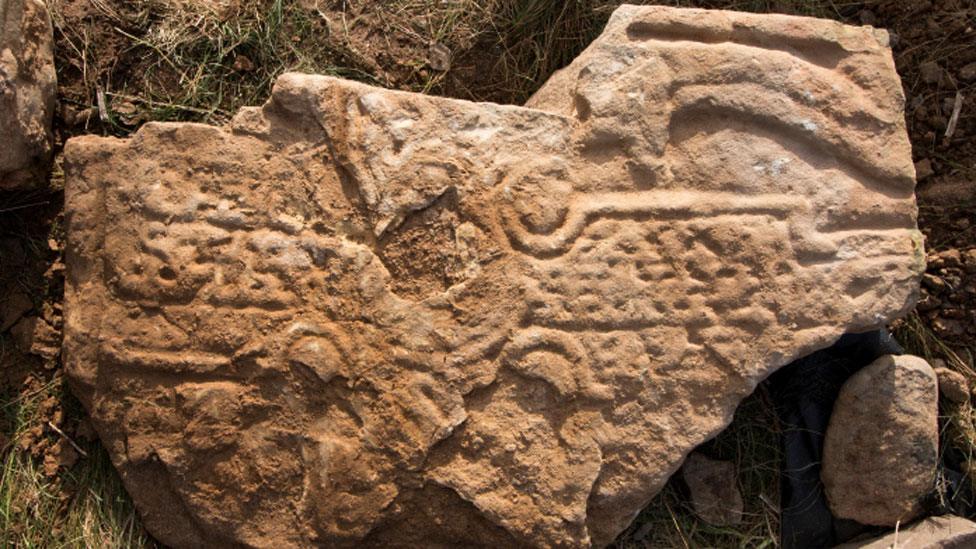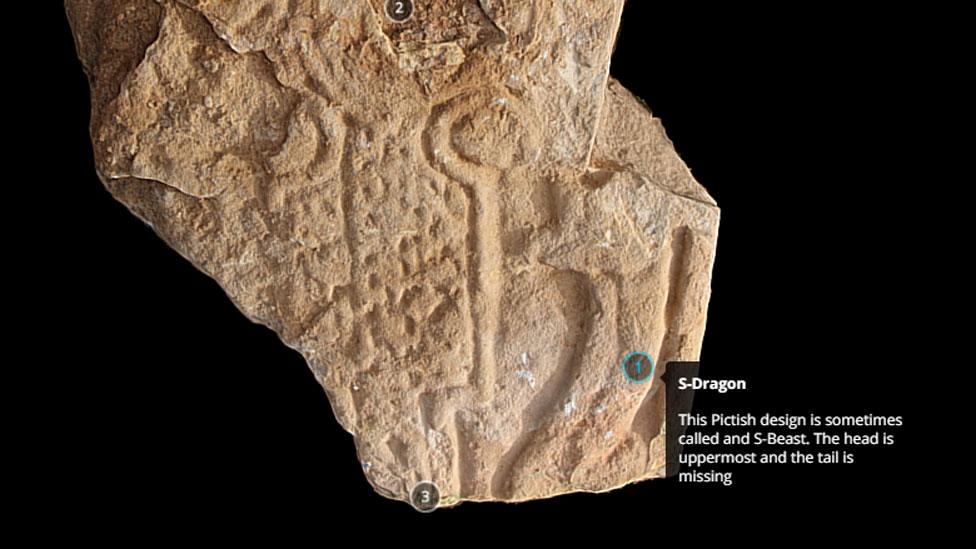Rare Pictish stone with dragon carving found on Orkney
- Published

The stone was found after a storm
A Pictish stone carved with a cross and what is believed to be a dragon-like beast has been discovered in an eroded cliff face on Orkney.
The find made on Orkney's east mainland coast earlier this year has just now been announced.
Orkney Research Centre for Archaeology (Orca) with support from Historic Environment Scotland rescued the relic.
Known as a Pictish cross slab, it is only the third stone of this type to be found on the islands.

3D model of the stone showing the dragon
Archaeologists believe it dates from the 8th Century and provides an insight into the early Christian period on Orkney.
It could be about 1,300 years old and from a time in Scotland's past that is largely a mystery to archaeologists and historians.
Ornately decorated Pictish stones are most commonly associated with parts of the Scottish Highlands and Aberdeenshire.
Famous examples include the Rhynie Man, external, a 1.8m (6ft) high stone found in the 1970s near Huntly, Aberdeenshire, and the Knocknagael Boar Stone, external from a site on the outskirts of Inverness.
Archaeologists said the Orkney stone has an weathered but "exquisite design".

The stone has been described by archaeologists as a rare find
It has an intricately carved cross flanked by the dragon, or beast, and on the reverse side another Pictish beast design stared out from the stone face, with beak open grasping what could be the remains of a staff.
The discovery was made by Orkney-based archaeologist Dr Hugo Anderson-Whymark following a storm.
Nick Card, senior projects manager at the University of the Highlands and Islands Archaeology Institute's Orca, said: "Carved Pictish cross slabs are rare across Scotland with only two having been discovered in Orkney.
"This is therefore a significant find and allows us to examine a piece of art from a period when Orkney society was beginning to embrace Christianity.
"Now that the piece is recorded and removed from site, we can concentrate on conserving the delicate stone carving and perhaps re-evaluate the site itself."
The excavation of the Pictish stone was undertaken with funding from the Historic Environment Scotland Archaeology Programme.
The stone is now scheduled for conservation and possible display at a future date.

A 3D model of the stone